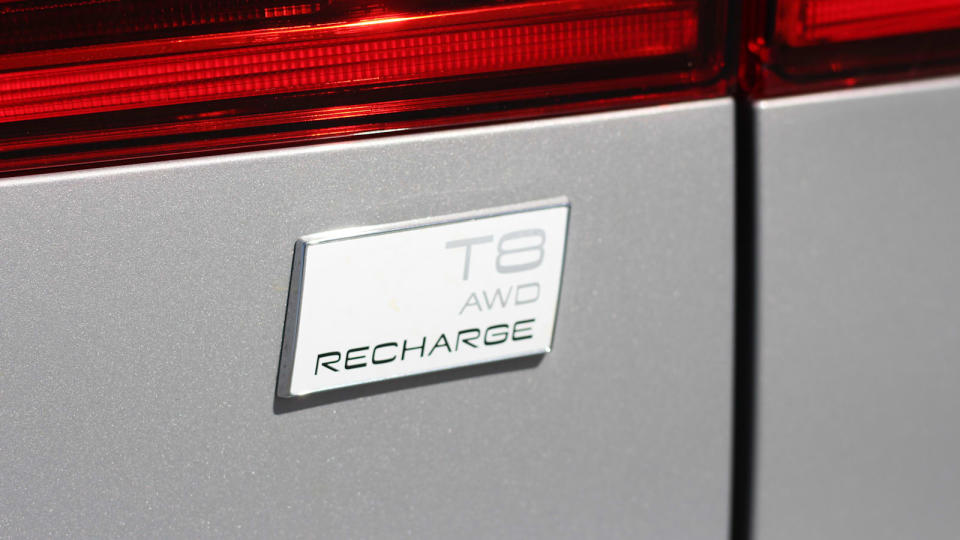2022 Volvo XC60 Recharge First Drive Review | Pumping up the electric range

PALM SPRINGS, Calif — It may not look like it on the outside, but the 2022 Volvo XC60 Recharge is a substantially updated plug-in hybrid SUV. In fact, the entire XC60 line is refreshed for the 2022 model year, but we’re going to zero in on the Recharge PHEV.
Volvo let us spend a day behind the wheel of the newly-announced “extended range” Recharge model in sunny California, and we came away with far more feelings than expected from this Swedish crossover. Just so everybody is on the same page, the “extended range” Recharge represents a mid-model-year refresh of the XC60 Recharge. There were 2022 model year XC60 Recharge models sold prior to today that featured the same electric hardware as prior model years, and therefore featured the old EPA-estimated electric range of 19 miles on a full charge. The “extended range” model that we drove bumps that all the way up to 36 miles, nearly doubling the previous range. Volvo says that these new “extended range” models are the ones shipping to dealers now, not the older model. This is definitely something to be aware of in later years should you find a used 2022 XC60.
So, how has Volvo found this much extra range? The big difference is in the battery pack, going from an 11.6-kilowatt-hour pack to an 18.8-kWh pack. Volvo managed to package a third layer of cells into the pack that it didn’t have before, and it did so in the same space as before — it continues to run along the car’s spine in the center tunnel area. Volvo claims that this more energy-dense battery pack will take 5-8 hours to charge when hooked up to a 240V power source, so you should easily get a full charge by leaving it plugged in overnight, assuming you have the applicable charging hardware.
This new battery pack is paired with a totally revamped powertrain setup. The layout is the same as before. That means there is an electric motor positioned on the rear axle that drives the rear wheels and a gasoline engine in front that exclusively powers the front wheels, thereby giving the XC60 Recharge all-wheel drive. To our delight, both the electric motor and the gasoline engine are new this year.




The new rear electric motor represents a big power boost, with 143 horsepower greatly surpassing the old motor’s 87 horsepower. Ultimately, this means that the XC60 Recharge is now significantly more enjoyable to drive in its purely electric mode (aptly named “Pure”). Power is more than sufficient to keep up with exuberant traffic off the line, and it’ll even comfortably get you up to highway speeds before maxing out at 78 mph. So, not only can you go much further than before using battery power, but it’s also a much more pleasant experience that won’t have you stressed out about the car’s lack of acceleration. Alternatively, it limits the need for the gasoline engine to kick in under heavy throttle.
These pleasant surprises keep rolling when we get to the gasoline engine part of this hybrid XC60. The 2.0-liter four-cylinder engine that was both supercharged and turbocharged before is now only turbocharged. Yes, Volvo dropped the supercharger, but only for the Recharge (the XC60 Polestar Engineered continues to utilize one in its plug-in hybrid powertrain). To keep this powertrain feeling perky on the low-end, Volvo instead uses a crankshaft-mounted integrated starter motor that both eases the transitions between electric and gasoline power, and adds a torque boost when the supercharger was previously helping matters. To quantify that shove, Volvo says the new helper motor is capable of providing 111 pound-feet of additional torque on takeoffs. The now-turbo-only engine makes 312 horsepower and 295 pound-feet of torque. All systems combined, the new Recharge powertrain provides 455 horsepower and 523 pound-feet of torque.

That is a heaping pile of power, and the quoted 0-60 mph time of just 4.5 seconds feels spot-on. It’s a half second quicker to 60 mph than the pre-refresh model, and we’ll attribute much of that to the extra leap it has off the line from the more powerful electric motor. You’ll want to use the “Power” mode to take advantage of this added thrust, as it keeps the engine running at all times, allowing both the engine and electric motor to work in parallel to one another.
What’s even more impressive than the sheer acceleration from this new powertrain is its added refinement. The old T8 powertrain with the supercharger was one of the rougher and more unrefined boosted 2.0-liter engines out there. Now, it’s a shockingly smooth operator with none of the vibration harshness or gruff noises we’ve complained about in the past. Volvo’s claim of the integrated starter motor smoothing transitions out couldn’t be truer.


 Yahoo Autos
Yahoo Autos 
